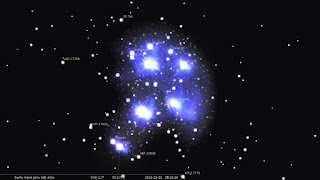**The
Nature Moncton field trip scheduled for today, Saturday, will take place
tomorrow, Sunday, October 23rd,
with the same itinerary, which is repeated below. Contact numbers to join the
group or contact at any time are 852-0863 or 866-2752.
Fall
Birding and Tour of the Mapleton Acadian Forest
Trail
Fall has arrived and with it some very special outdoor experiences. One of the most spectacular is surely the
appearance of autumn colors, which occurs with the passage of deciduous trees to
dormancy. On Saturday October 22nd,
Nature Moncton is offering a chance to experience the beauty of autumn with a
double-pronged activity lead by Roger Leblanc.
We
will assemble at the Moncton Coliseum parking lot at 8:30 am. After consolidating vehicles, we will proceed
to do some birding (a given with Roger) in promising areas on route to
Elgin. The exact itinerary for this
first part of the outing will be adjusted in the context of what has been seen
between Moncton and Elgin in the days before the outing and where Roger thinks
we might find interesting birds, but the Salisbury region would seem like a
probable destination. We will then head
to the village of Elgin just South of Petitcodiac off of route 1. After having our lunch (pack all you need as
apparently the very nice country store in Elgin has closed) Matt Steeves, a
member of the Elgin Eco Association, will meet us there. Matt will explain the ins and outs of the
preservation of a mature forest stand near Elgin that this organization has
managed to secure.
The Mapleton Acadian Forest trail is an interpretive nature trail constructed and maintained by the Elgin Eco
Association. The trail provides an
opportunity to learn about the mature Acadian Forest and how it responds to a
variety of human disturbances. The trail
features interpretive signs, and it crosses a wide variety of forest types and
conditions. Matt will bring us to the
trail and from there we will proceed to hike it for a couple of hours, all the
time exploring what might be found along it bird-wise, but also looking at
trees, plants and mushrooms and whatever else we can find. The trail is of medium difficulty but do
expect some good inclines and think of appropriate clothes and footwear. If you choose to participate in only the
hike, you can do that too by joining us at around noon in the parking lot of the
old general store in Elgin.
When you come off the
Highway 1 at Petitcodiac from exit 233
you will take route 905 towards Elgin. This route will become route 895 at one
point before you get to Elgin.
Once in the village were route 895 turns at 90 degree you will see the general store to your left and our party will be in the parking having lunch. We will be meeting Matt Steeves there at 1 PM”.
Once in the village were route 895 turns at 90 degree you will see the general store to your left and our party will be in the parking having lunch. We will be meeting Matt Steeves there at 1 PM”.
So come join us for some fall birding and a nice
hike in the glorious autumn colors of a mature Acadian forest.
**For
those who have not seen it, there is a great viewing stand built overlooking the
Cap-Brûlé lagoon. Rose-Alma Mallet sends a few photos of it. Rose-Alma advises
it was a community project of Beaubassin East. A mound was built first, which
did not work well, so with the advice of Les Ami.e.s de la Nature, it was
decided to build something safe and secure, which was surely done. Rose-Alma
comments Les Ami.e.s had been trying for many years to get an elevated viewing
area. Their efforts were very effective and will be appreciated by
many.
Penny Clark photographed two sharply dressed male Hooded Mergansers in the Little Bouctouche River in front of her summer cottage at McKees Mills on Friday.
**Aldo
Dorio shares two excellent photos from 2013 that need to be shared. One shows
the striking plumage of the WILLET [Chevalier semipalmé] that shows when it
lifts its wings in flight, and another is of the relatively uncommon shorebird
visitor to New Brunswick, the HUDSONIAN GODWIT [Barge hudsonienne] that we could
still see. Note the long upturned bicoloured bill, black tail, and black legs.
The Hudsonian Godwit is a large shorebird at 15 ½ inches average. Aldo also
submits a photo of a WEASEL [Hermine] in its winter pelage, taken in November of
2010. We should soon expect any Weasel seen to be making the transition from
summer brown to winter white.
**It
seemed like an odd scenario to receive photos of SHAGGY PARASOL Mushrooms
[Lépiote déguenillée] on consecutive days; this is a Mushroom I have never found
on my own or have never had brought in to Mushroom presentations. Jeanette
Petrie in Wheaton Settlement sent a photo of what appeared to be a pair of huge
Shaggy Parasol Mushrooms, and I couldn’t resist going out to see them. They were
indeed Shaggy Parasol Mushrooms, happily growing in a compost pile, one
measuring 10 ½ inches / 27 cm across the top, which according to the guides is a
huge one. Photos are attached of the two in situ, and another showing the
underside to show the partial veil style and stalk type. It appeared like there
were more to come beside the two photographed. They are in preparation to go to
the New Brunswick Museum archives.
Nelson
Poirier
Nature
Moncton
HOODED MERGANSER (MALES). OCT 21, 2016.PENNY CLARK
HUDSONIAN GODWIT.2013.ALDO DORIO
OBSERVATION DECK AT CAP BRULE LAGOON.0CT 21, 2016.ROSE-ALMA MALLET.
OBSERVATION DECK AT CAP BRULE LAGOON.0CT 21, 2016.ROSE-ALMA MALLET.
SHAGGY PARASOL MUSHROOM..OCT 22, 2016.NELSON POIRIER
SHAGGY PARASOL MUSHROOM..OCT 22, 2016.NELSON POIRIER
WEASEL.2010.ALDO DORIO
WILLETS.2013.ALDO DORIO









































































